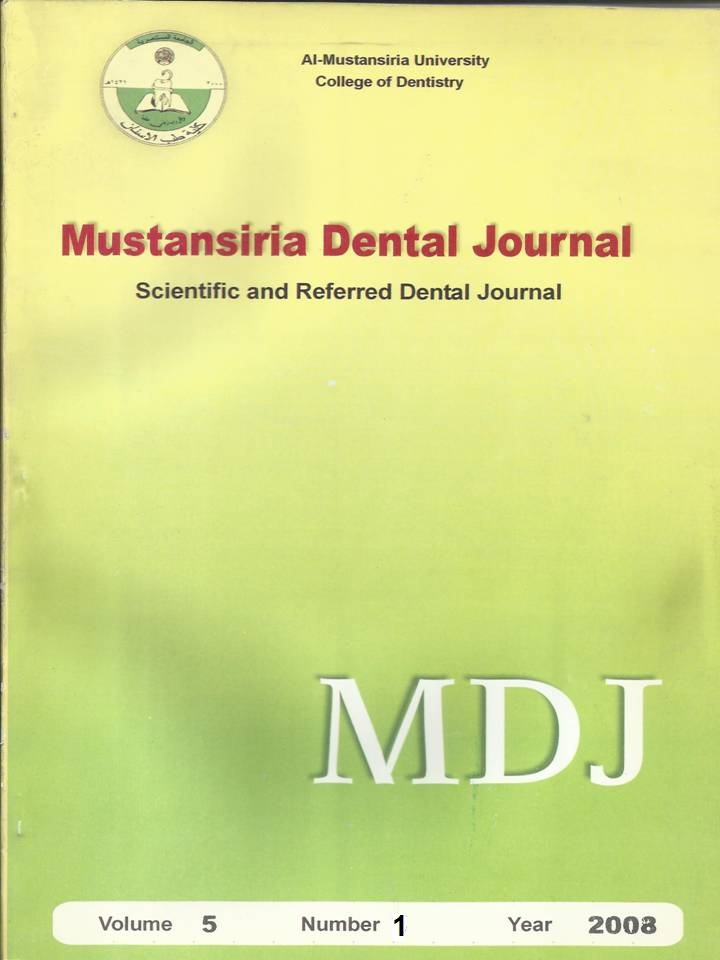Chromatographic estimation of tetracycline in saliva
DOI:
https://doi.org/10.32828/mdj.v5i1.502Keywords:
Key word: bio-bioavailability of tetracycline – concentration of tetracycline in salivaAbstract
Tetracyclines have been widely used in dentistry, especially in treatment of periodontal diseases and other oral pathological lesions. They are effective in treatment because their concentration in the gingival crevice is 2-10 times that in serum. In addition, several studies have demonstrated that tetracyclines at a low gingival crevicular fluid concentration (2-4 mg/ml) are very effective against many periodontal pathogens. Tetracyclines are an extensively used group of antibiotic medicines. Clinical pharmacology of tetracycline in saliva was not clear until the time of this research achieving on normal subjects or patients required tetracycline treatment. The evaluation was achieved by using suitable method (efficient, low cost, and reproducible). The purpose of this study is the determination of the tetracycline concentration in saliva. The obtained results from HPLC method recorded saliva concentration of tetracycline ranged fom 0.08 to 0.23 μg. / ml. The HPLC method provided successful methods for monitoring the tetracycline in saliva with a detection limit reached to 0.05 ng/ml. Since the saliva is considered as the first line of immune system in the oral cavity, so it is important to suggest further study to know the therapeutic effect of tetracycline through saliva against certain oral lesions
Downloads
Published
Issue
Section
License
The Journal of Mustansiria Dental Journal is an open-access journal that all contents are free of charge. Articles of this journal are licensed under the terms of the Creative Commons Attribution International Public License CC-BY 4.0 (https://creativecommons.org/licenses/by/4.0/legalcode) that licensees are unrestrictly allowed to search, download, share, distribute, print, or link to the full texts of the articles, crawl them for indexing and reproduce any medium of the articles provided that they give the author(s) proper credits (citation). The journal allows the author(s) to retain the copyright of their published article.
Creative Commons-Attribution (BY)









